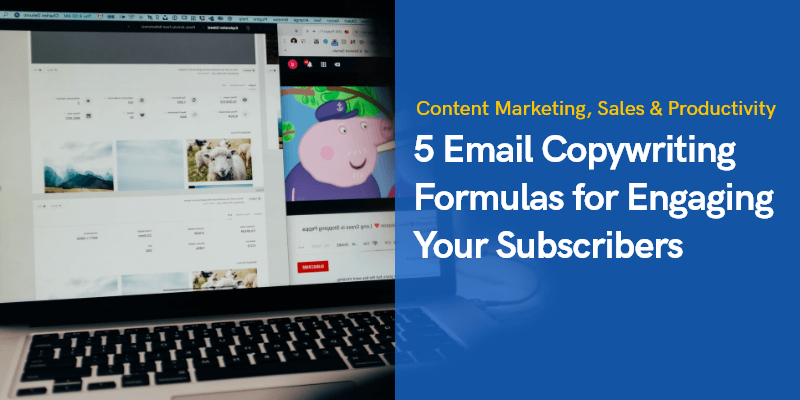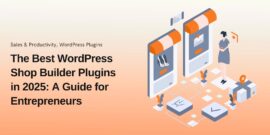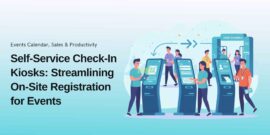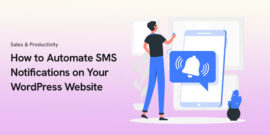
5 Email Copywriting Formulas for Engaging Your Subscribers
Introduction to Engaging your Subscribers
While social media and instant messaging apps are grabbing the lion’s share of attention among digital marketers, email remains one of the most popular marketing channels. If you want to widen your audience, email marketing is definitely the way to go.
Over 4 billion people have access to email, compared to just 2.2 billion Facebook and 1 billion Instagram users.
Email is not just widespread. It’s also very effective at engaging users. Millennials spend a lot of time reading their email, and across age groups, most users access their email through their smartphones or tablets.
It’s safe to say that email as a marketing channel is not just here to stay.
It’s actually becoming more effective as more younger users start using it.
However, as much as email is a very effective marketing channel, you might not even be getting the most out of it. Keep reading to see some common factors that drag down the effectiveness of email marketing.
Why is your email marketing strategy not working?
With billions of highly-engaged users, email should be one of the primary drivers of traffic to your site. In addition, around three-fourths of customers actually prefer to receive marketing content through email.
You can easily do it using WordPress email marketing plugins, however, this medium’s popularity could actually work against you: an average user receives up to 126 emails daily, which includes 30 emails that are marked as spam.
What does this mean for you as an email marketer? Whenever you send an email to your subscribers, you are actually competing against at least 120 other emails for the user’s attention, 30 of which are marked as spam.
Let’s say half of the remaining emails are work-related. That leaves you with 44 other marketing emails that the subscriber could read instead of yours. You have to make your emails worth opening.
Why don’t your subscribers click on your emails? Here are four of the most common reasons:
- Dull subject lines: When your subject lines just don’t spark any interest, there is a low chance of your subscribers being enticed to open your emails. Try personalizing your emails’ subject lines by using the subscriber’s first name.
- Wrong audience: Even if you hire the best email copywriters around, your email marketing campaign will just go to waste if you send it to the wrong people. Running your email subscriber list through an email verification service will help ensure that you’re sending your emails to the right recipients.
- Uninteresting products or services: People hate the hassle of switching over to another product or service provider, especially if the product you’re promoting doesn’t offer anything different from the one they’re currently using. If your product is to attract new users, it has to be something really special.
- Poorly written email copy: Whether it’s bad grammar, faulty sentence construction, or the lack of a compelling narrative, bad email copy tends to turn away prospective customers.
Email marketing in itself is a good source of new leads and customers for an eCommerce business.
However, you need to do it the right way and use the right email marketing tools. It all begins with writing an engaging email copy. In the next section, we will look at email copywriting techniques used by some of the world’s top brands.
Five Email Copywriting Formulas for Engaging Your Subscribers
Most professional copywriters follow a set of formulas that help them churn out helpful, informative copy fast. These formulas have their roots in disciplines such as psychology, marketing, and literature, and their effectiveness is well-documented.
Here are five copywriting formulas designed to grab your subscribers’ attention and keep them engaged.
AIDA
This copywriting formula forms the basis for many of the other formulas used by marketers and copywriters, which is a testament to AIDA’s effectiveness. The acronym stands for the following steps:
- Attention: Start with a headline that catches the reader’s eye.
- Interest: Make them want to know more about your topic.
- Desire: Appeal to their emotions and make them want whatever you’re promoting.
- Action: Give them a way to get whatever you’re offering.
Here’s an example from marketing company The HOTH that uses AIDA:

In this example, the subject line appeals to the company’s core audience, which is SEO practitioners and marketers. The first two paragraphs of the email grab the reader’s interest, then the third paragraph hooks the reader in with the promise of huge results coming from a simple formula.
Finally, the email offers a way for the reader to learn how to get the promised results by offering a call to action. You can use an email countdown timer or something similar to elicit an action.
4 Ps
The 4 Ps formula takes advantage of the human fondness for stories. As a species, we like things to have a beginning and an end, with a few plot twists in between. The 4 Ps succeed in using this structure to capture both the emotion and the intellect of the reader. But what exactly are the 4 Ps?
- Problem: What is the reader’s immediate concern or pain point?
- Picture: What state does the reader want to reach when they resolve the problem?
- Proof: Why should the reader believe that you can solve the problem?
- Proposal: How does the reader get from the problem to the solution?
Let’s take a look at an example from Freelancer.com:

The example above shows the 4 Ps method in action. It starts with stating the problem (how to get more views), a picture of the desired end state (a new logo created by a freelancer), proof of the concept (stating the number of Freelancer users), and ends with a proposal (inviting the user to post a project at no cost).
As a long-time Freelancer user, I must say the platform actually works very well, and I have to thank the brand’s email marketing for the discovery.
PAS
The PAS formula is one of the quickest and easiest ones to learn and use. It’s so widespread that you probably wouldn’t recognize it at first, but once you know its key components, you’ll start seeing it everywhere.
Here are the three parts of an email written using the PAS formula:
- Problem: You know that your reader has a problem that needs solving, so you tell them what the problem is.
- Agitate: Your reader might not realize how big of an issue their problem is, so you need to stir things up a little bit. The aim here is to get in your reader’s head and remind them of the problem’s effects on them and their business.
- Solve: Here’s where you present a solution to the problem.
If that formula does seem a little familiar, it’s because most of the marketing emails you get to follow that structure. Here’s a typical email newsletter written with PAS:

What makes the email copy in the example above so effective? First, it acknowledges a common problem most content writers have: content envy. It continues by describing the problem, which is spotting a piece of content that was so good, you wish you’d written it yourself.
Then it offers five different ways to get over content envy, such as repurposing existing articles.
Some content writers take it further and add two more steps: Outcome and Problem. The outcome tells the reader what they can expect if they use the suggested solution and often takes the form of a customer testimonial.
The problem section, on the other hand, presents another problem that may or may not be related to the one you just discussed, which makes the PASOP format great for campaigns that use follow-up emails heavily.
FAB
If you’re introducing a new product to the market, it’s tempting to build a comprehensive list of its features and send them to your subscribers. However, your customers will likely ask, “Those features are great and all, but what’s in it for me?”
Using the FAB formula will not only introduce your product to the audience, but will also help them realize why they should try it. Here are the elements used in the FAB formula:
- Features: Introduce your product and its features, but keep it short and simple.
- Advantages: Explain why your product is better than the competition.
- Benefits: Tell the reader how and why your product can solve their problems.
The key to using the FAB formula is to put yourself in your reader’s shoes. Your email copy should emphasize what the reader stands to gain if they try your product. Here’s a good example of a FAB email:

Each section of the FAB formula can be seen in the example from Lucidchart above: The email starts off with an introduction of the new Lucidspark product, continues with a list of advantages, and wraps things up with the projected benefits.
It emphasizes what you could do with the new product, and why you need to use it. It even has an animated demo of the new features!
BAB
Do you see your product or service as a way to make things better for your customers? The BAB technique revolves around the concept of taking someone from a bad place to a better one with the help of your brand.
It helps you emphasize the benefits that your products bring in relation to your customers’ pain points. It has three main parts:
- Before: Start by telling the reader how their current state is not the best one for them. You need to make them realize that they have problems, and that they need to address them.
- After: Next, paint a picture of a world without those problems. What are the differences between the two worlds, and why is the customer better off without their problems?
- Bridge: How does the customer get from their current state to the promised land that you just described? Your product gives them the power to solve those problems and move on to a better place.
Here’s a good example of a marketing email that uses the BAB formula:

While the other examples in this article have multiple paragraphs, the example from Instacart above uses BAB in just one paragraph. Most stores in the US are closed on Thanksgiving, and people who fail to do their shopping before that day face the possibility of not having what they need (Before).
However, you can still ensure that you get your grocery items on time (After). All you need to do is to open the Instacart app (Bridge).
Wrapping up
While many people tend to shy away from things that seem formulaic there is a reason formulas exist: they work. That’s why they are taught in content marketing courses.
Email marketers, for instance, use copywriting formulas that start by attracting the reader and calling them into action (AIDA), offer solutions to problems (4 Ps and PAS/PASOP), introduce new products or features and emphasize their benefits (FAB), or open the reader’s eyes to new possibilities (BAB).
Each of the copywriting formulas we’ve discussed works because they engage the reader, which is what your email copy should be aiming for. You can use one or all of these formulas, depending on what you want to say. Don’t be afraid to try different techniques until you find a combination that works for you.



